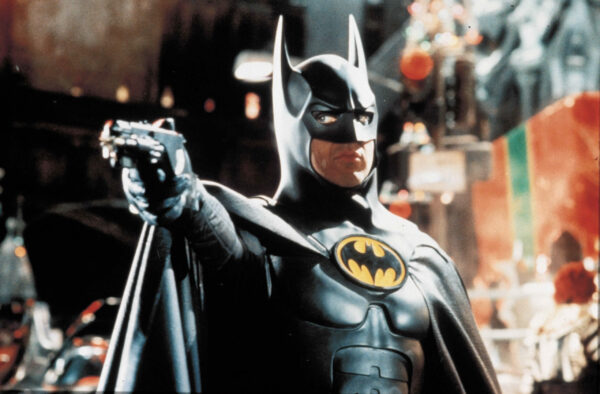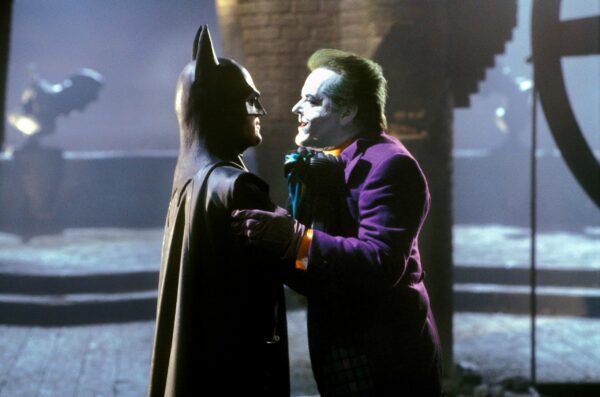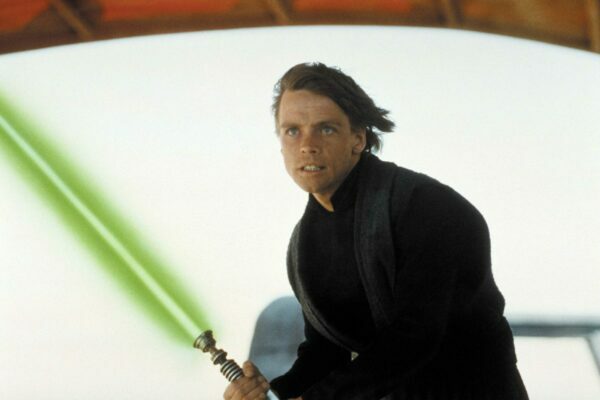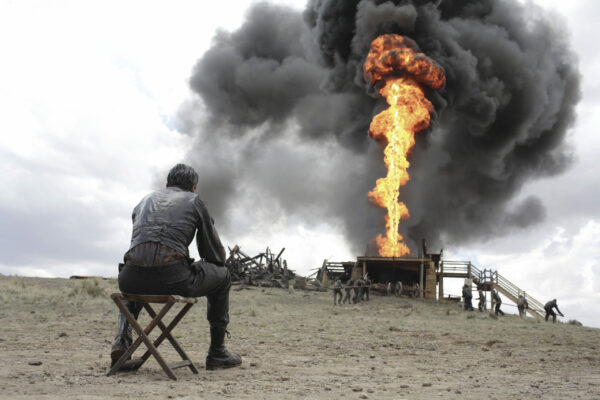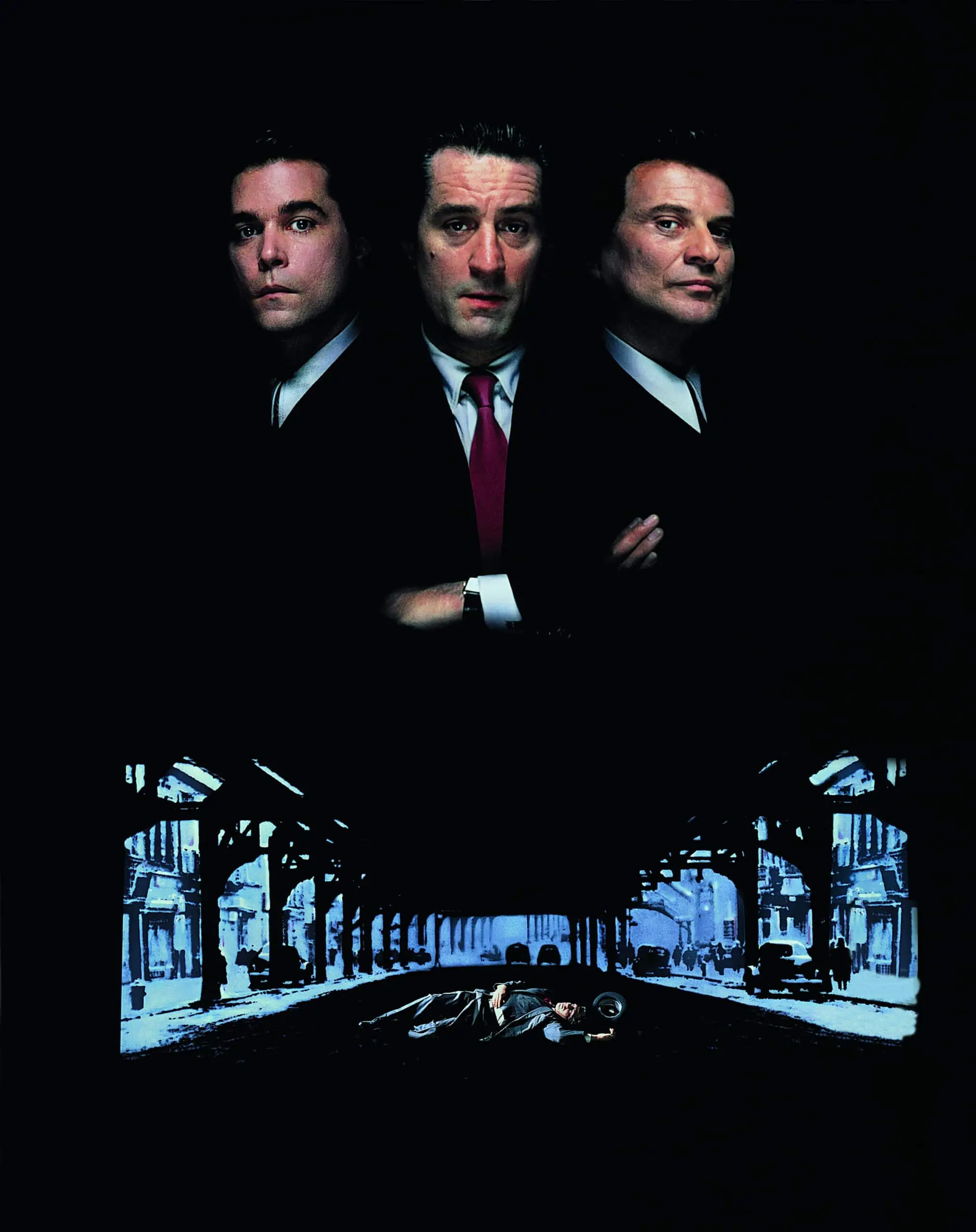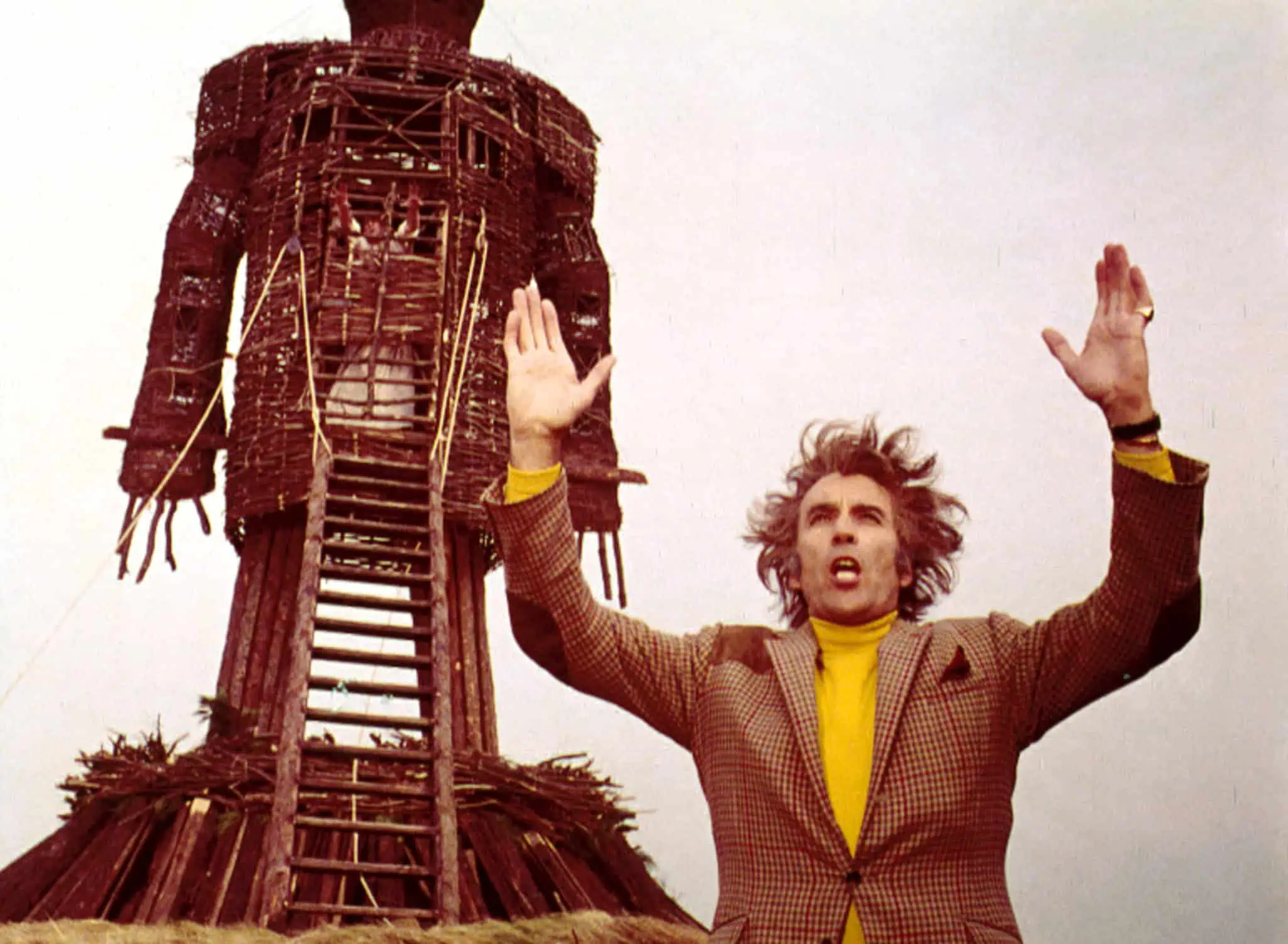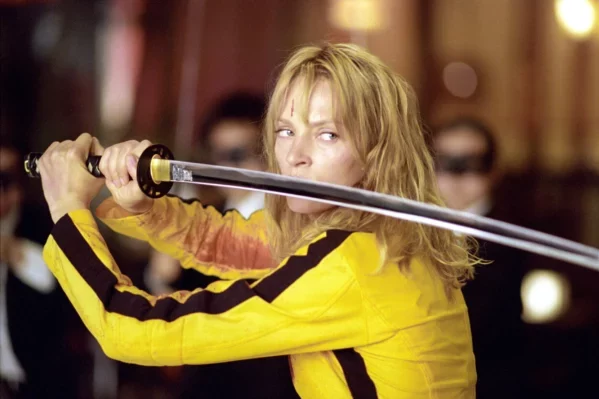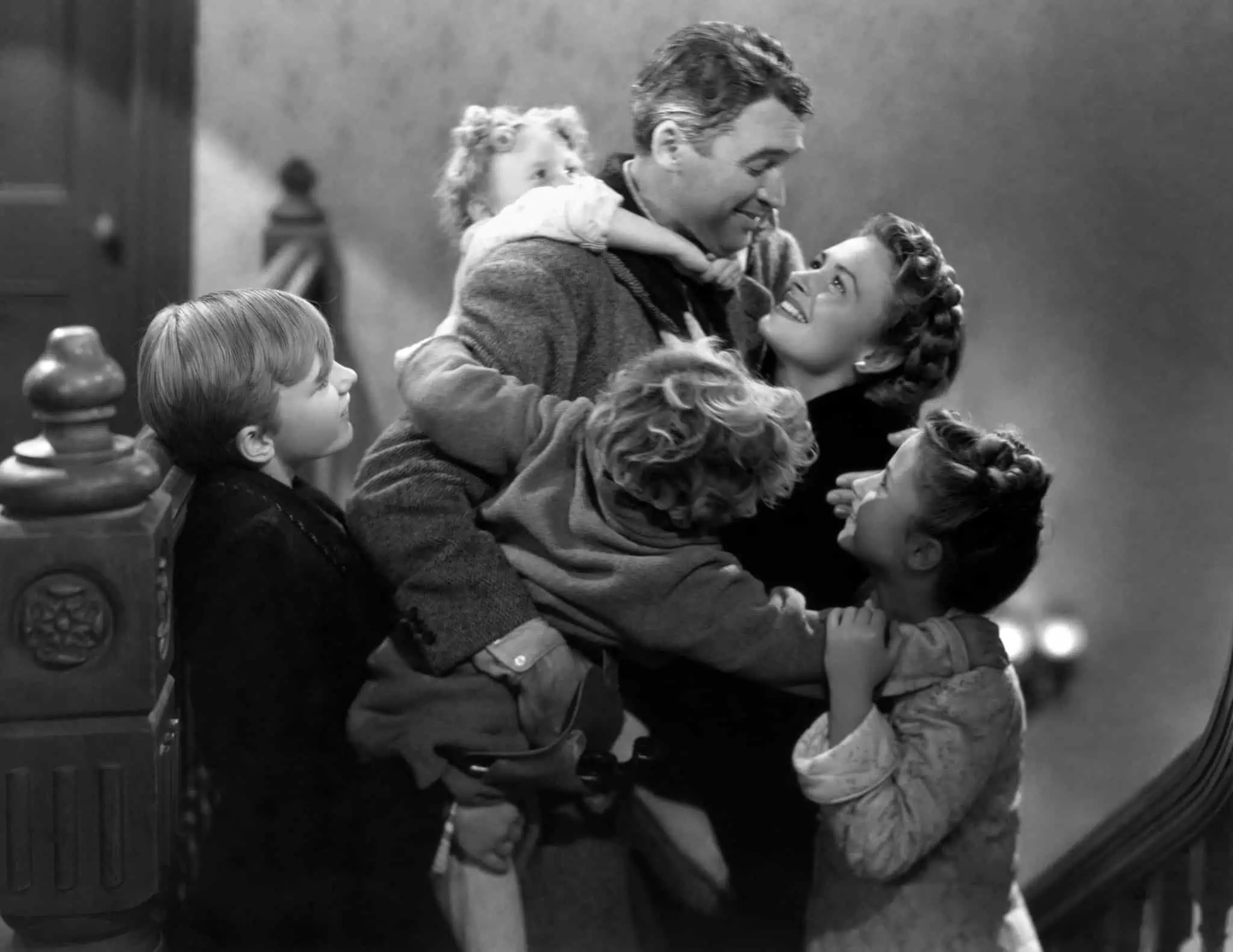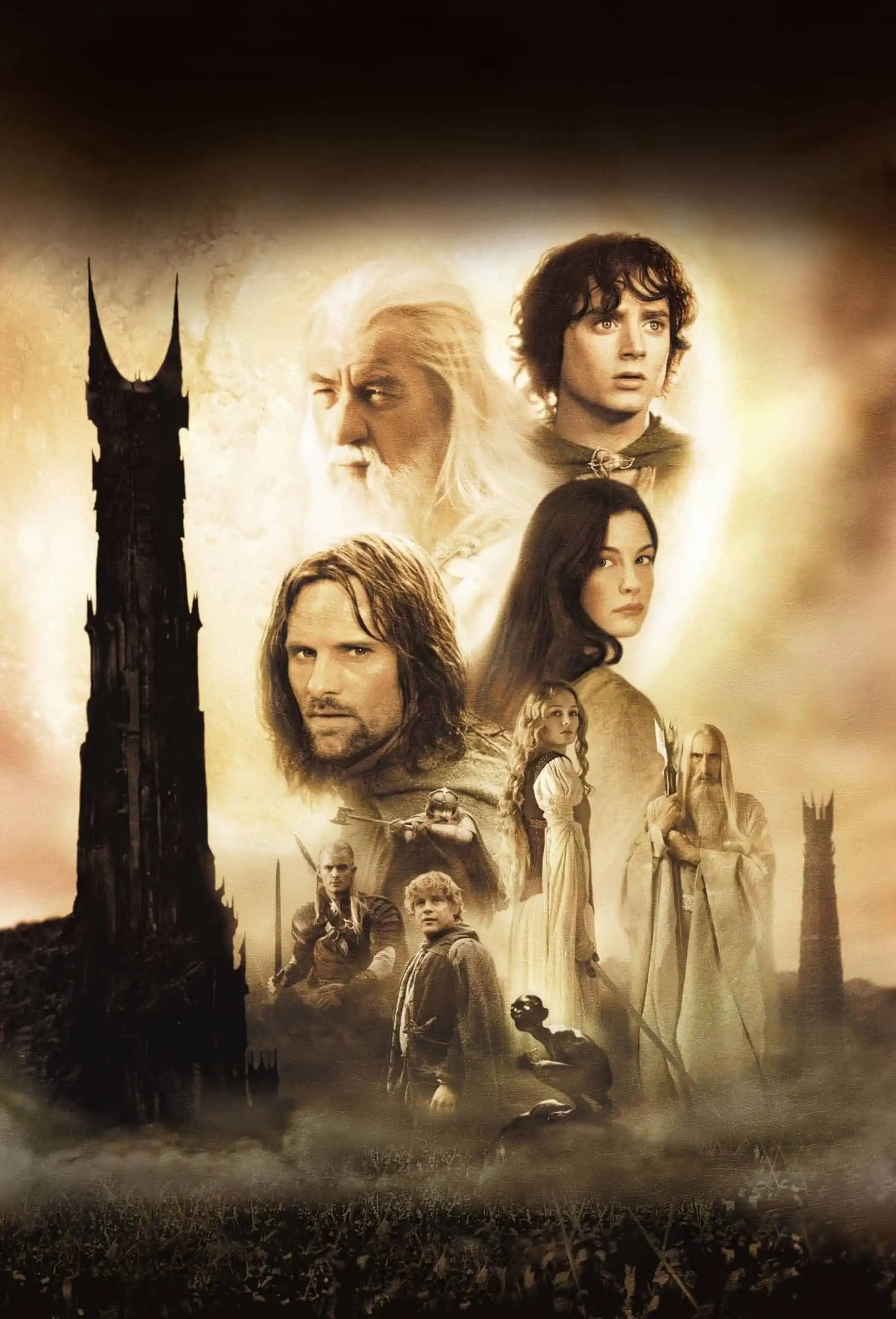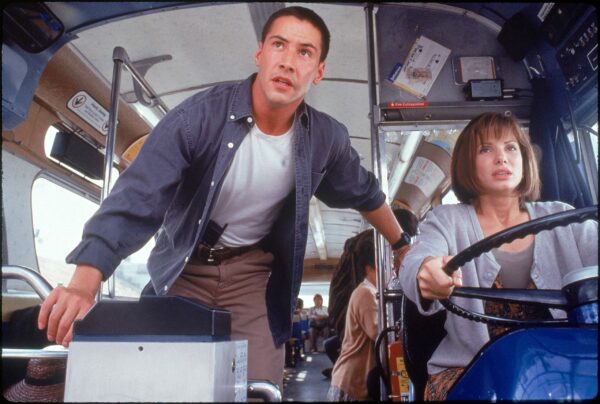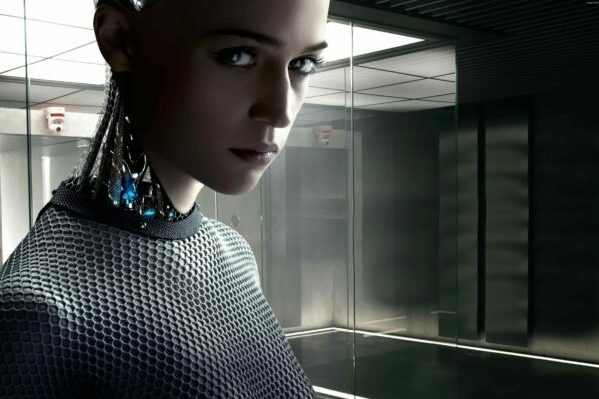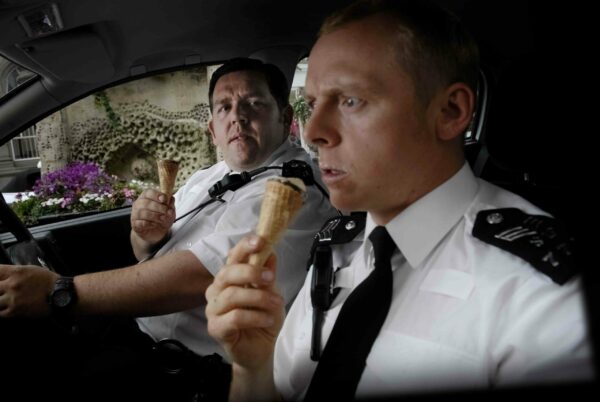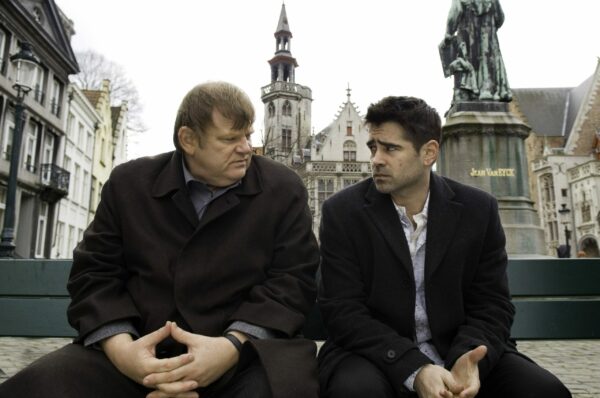
Richard Donner’s Superman was one of the biggest box office hits of the 1970s. We’ve got the crazy behind the scenes story via 25 interesting facts about the movie.
Released in 1978, Richard Donner’s Superman is regarded by many as the original superhero movie. Marvel have a stranglehold on the genre now, but it all harks back to Donner’s classic. Starring Christopher Reeve as the Man of Steel, Margot Kidder as fearless reporter Lois Lane, and Gene Hackman as villain Lex Luthor, the movie was a mega hit at the time. And this despite Marlon Brando’s enormous fee for what amounted to not much more than a cameo.
Read on for one of the most fascinating behind the scenes stories, relayed via some fascinating facts about Superman.
1. The film opens with some striking visual effects
Towards the start of the film we see a shot of the burning red Krypton sun. One of the special effects team on Superman was called Les Bowie. It was he who created this amazing effect. He filled a bucket with gasoline, set the gasoline on fire, and then filmed it shooting straight down, so all we see is the fireball.
The first part of the film is set on Krypton in the moments before its destruction. The Kryptonian people we see wear luminous suits that seem to glow unnaturally. The material the actors wore were made from the same material movie screens used to be made out of. A material made up of thousands of tiny balls of glass that reflected the light, to make it look like they were glowing.
The luminous Kryptonian suits
2. There was more great practical effects to show Clark’s talents
We spend approximately 45 minutes in Smallville with a teenaged Clark Kent. This is before he heads to Metropolis, and when his super powers start to develop. Some nifty special effects tricks were used to show these powers.
The moment that Clark kicks a football over the field and out of sight is a great shot. This was achieved by burying an air cannon in the ground and firing a wooden football from it.
We then see Clark outrun a train. This was acheieved by attaching a crane to the back of a truck. Jeff East (who played teenage Clark) was suspendeed from the crane and mimicked running as the truck sped along. (Also in this train scene, we see a young Lois Lane with her mother aboard the train. Lois’ mother was played by an actress called Noel Neill. She played Lois Lane in the Superman TV serial of the 1940s).
Perhaps the most memorable young Clark moment comes when he lifts Jonathan Kent’s tow truck onto two wheels. This harks back to the cover of the first edition of Action Comics in 1938. This was Superman’s first ever appearance, and the famous cover shows him lifting a car.

The cover of Action Comics from 1938
3. Jeff East originally auditioned for another role
As mentined above, teenage Clark is played by Jeff East. He originally auditioned to play the adult Superman. East didn’t get that part, so he auditioned for Jimmy Olsen. He didn’t get that either, so asked if he could go for young Clark. He tested, and was eventually successful.
To make him look more like Christopher Reeve, East underwent 3 hours of makeup every day. He also wears a hairpiece. Also, Christopher Reeve dubbed East’s dialogue, so it’s Reeve’s voice we hear, not East’s.
Jeff East as young Clark Kent
4. The producers had the vision for the film
To tell the story of how Superman came to the big screen, we need to go back to its earliest days, and the dynamic Father-Son duo of Ilya and Alexander Salkind.
The Salkinds were French-Mexican producers who first had the idea of making a Superman movie in 1973. They got some financing together, and convinced Warner Bros to get involved. The only deal they could get was a negative pickup deal, meaning Warner Bros were under no obligation to put any money in until they saw the film. So the Salkinds had to find funding themselves.
The Salkinds offered the gig to Steven Spielberg. Spielberg, though, was red hot at the time, and asked for too much money. Francis Ford Coppola was also offered the film, but said it wasn’t his kind of movie.
Norman Jewison (In The Heat Of The Night, Fiddler On The Roof, Moonstruck, The Thomas Crown Affair) turned the film down and said to Alexander Salkind: “The only person in the world who wants me to direct this film is you.”
George Lucas said no, in favour of doing Star Wars (1977). They also asked William Friedkin and he said to Salkind: “Guys like you are going to kill cinema.”
Sam Peckinpah (The Wild Bunch) was also asked. He was interested, and it was actually the Salkinds who said no this time. Peckinpah met Alexander Salkind to discuss the film, and Salkind told him their plans when suddenly, Peckinpah pulled out a gun and put it on the table. He said: “You’d better shut up, kid. What do you know about making movies?”

L-R: producer Pierre Spengler, Alexander Salkind, and Ilya Salkind
5. The director hunt went on even longer than that
So, after all of that – Spielberg, Coppola, Lucas, Jewison, and Friedkin. The Salkinds finally found their man.
Guy Hamilton.
He was famous at the time mainly for directing James Bond movies. Goldfinger (1964), Diamonds Are Forever (1971), Live and Let Die (1973) and The Man with the Golden Gun (1974) were all part of his filmography. Hamilton took the job but, when the Salkinds moved production from Rome to England to save costs, Hamilton had to pull out as he was a tax exile in England.
By this point, the Salkinds were desperate. Richard Donner had just directed a hit horror called The Omen (1976), and Alexander pitched him Superman. The pitch was:
“I’m making a Superman film. Brando is signed up. Gene Hackman is signed up. Mario Puzo has written the screenplay. I want you to cast Superman and Lois Lane, and I’ll pay you 1 million dollars.”
$1m was ten times more than Donner had been paid for directing The Omen. So, finally, the Salkinds had their director.

Richard Donner on set with Christopher Reeve
6. The production was not plain sailing
Perhaps unsurprisingly, things did not run smoothly between Donner, the Salkinds and producer Pierre Spengler.
- The Salkinds wanted to shoot Superman and Superman II at the same time, to save costs. It caused a logistical nightmare for Donner. It meant he had 7 different shooting units all filming at the same time. Donner said to Alexander Salkind, “this is ridiculous, I physically can’t get between the locations.” So the Salkinds hired him a golf buggy to shoot around on.
- The Salkinds would tell Donner every day the film was over schedule and over budget. However, whenever Donner asked what the budget was they’d refuse to tell him.
- Donner would order props, costumes, and equipment and the Salkinds would cancel the order without telling him. Donner said, “It was mad. They were mad. And I was really mad.”
- The Salkinds brought Richard Lester in to help with production. Because Lester was more of a ‘yes man’, they fired Donner after Superman was released and hired Lester to finish Superman II. This despite the fact that Donner had shot 75% of it. When they fired Donner, Donner told the Salkinds. “Fine. Just tell Spengler, if i ever see him again, I’ll kill him.”
7. Donner had a specific tone in mind
A comic book had never been adapted for the big screen to this kind of scale before. Therefore, in order to appeal to movie goers, Donner wanted to create a more grounded tone, whilst retaining a tongue-in-cheek element.
Donner had signs sent to every department working on the film and told them to hang them where everyone could see. The signs read, “VERISIMILITUDE.” A word which basically means to find the reality of something. To keep it truthful within its own world.
Donner also has a cameo in the movie. He plays a man who talks to Clark on the street when everybody is watching TV footage of Superman.
8. The Superman creators were very happy
When the film did come out, it was a massive success, commercially and in terms of its influence on superhero movies since. The creators of Superman – Jerry Siegel and Joe Shuster – were at the premiere. They came up with Superman back in the 1930s and Donner told the below story about meeting them at the premiere:
“I knew they were there, and they hadn’t seen the movie yet. I probably cared more about what they thought of it than anyone else. Afterwards they came up to me… they were both crying and said ‘thank you’.. It was the most moving experience of my career.”

Jerry Siegel and Joe Shuster, the creators of Superman
9. Finding the right actor to play Superman was not an easy task
As Superman, Christohper Reeve is iconic. Before he was cast, though, there were other names up for the role. Some turned it down, some auditioned, and some just wanted the part.
The Salkinds wanted a big name, and offered the role to Paul Newman. They offered him Superman, and he said no. So they offered him Lex Luthor, and he said no. So they offered him Jor-El, and he said no.
When they couldn’t get Newman, the Salkinds went for Robert Redford. He also turned them down. Clint Eastwood said he was too busy, and would always be too busy.
And James Caan said to the Salkinds: “There’s no way I’m getting in that f***ing suit.”
Some of the names that auditioned, but didn’t get the part were John Travolta, James Brolin, Bruce Jenner (now Caitlyn Jenner), Ryan O’Neal, and Nick Nolte.
Also, there were some very big names who wanted the role, and asked the Salkinds if they could do it. Arnold Schwarzenegger wanted it, but was told no. Sylvester Stallone also wanted it, but was vetoed by Brando. Stallone was furious about it and said, “I no longer respect Brando as an actor or as a human.”
And two musicians lobbied for the role as well. Neil Diamond was one. And the other was Elton John.
10. Luckily, the perfect actor auditioned
This is about the time Christopher Reeve auditioned. Donner thought he was too skinny to play the Man of Steel but Reeve told him he could put on 50lbs of muscle no problem. On the back of that, Donner went to see Reeve in a play where he was playing two roles: a father and son. Donner later said, “the kid was an amazing actor” and got him in for an audition. Writer Tom Mankiewicz later said of that audition, “when he said the words, ‘good evening Miss Lane’ me, Donner and Geoffrey Unsworth, the DP, exchanged glances like ‘this is the guy’!” Donner hired Reeve on the back of that audition.
Reeve also got into some serious shape for the role and put on 50lbs in weight to play Superman. He underwent a gruelling bodybuilding regime laid out by David Prowse – better known for playing Darth Vader.
Reeve also studied Cary Grant’s performance in Bringing Up Baby (1938), where Grant plays a bumbling, mild-mannered paleontologist. He also wore a cod-piece. That was the Salkinds’ idea. Margot Kidder says that Alexander said to Donner: “Either he has a big one or a little one. Which is it?”
Christopher Reeve’s screen test as Superman
11. Casting Lois Lane was just as lengthy a process
Just as with casting Superman, they went all around Hollywood to find the perfect Lois Lane. Again, there were some big names.
Shirley MacLaine, Liza Minnelli, Barbara Streisand, Carrie Fisher, Jennifer Jason Leigh and Natalie Wood were all considered. Jessica Lange turned down the chance to play Lois and Miss Tessmacher, who is one of Lex Luthor’s gang.
Several actresses screen-tested for the role, alongside Christopher Reeve. They included: Anne Archer, Lesley Ann Warren, Deborah Raffin, Susan Blakely and April Byron.
And in the end it came down to two people: Margot Kidder and Stockard Channing, best known for playing Rizzo in Grease (1978). In her screen test, Channing played Lois as similar to how she played Rizzo. Ilya Salkind said, “She was great, but she would’ve eaten Superman for breakfast.”
Kidder won the part, of course, and Richard Donner said about her: “When I met Margot in the casting office, she tripped coming in and I just fell in love with her.”
Stockard Channing’s screen test as Lois
12. Big stars turned down the role of Luthor
Every Superman needs a Lois, and every Superman also needs a Lex Luthor. The scheming criminal genius, and Superman’s greatest foe. Far from an unknown actor this time, we got a big star in the form of Gene Hackman as Lex.
The Salkinds knew from the start they wanted a star to play Luthor, and some other big names were considered. George Kennedy, Jack Nicholson, and Gene Wilder were all considered for the part. And Dustin Hoffman turned the role down.
Initially, Hackman wasn’t at all interested in Superman. He said: “I was very reluctant to do it at first. I was afraid that my reputation as a serious actor would be tarnished.”
Hackman says his opinion changed when he met Donner and said he was, “Full of life and had a great voice.” He was paid $2m for playing the part.
13. Hackman was a little difficult during production
Once he was cast, Hackman was rather stubborn on the set.
Lex Luthor is supposed to be bald. He has been since the earliest comic books. But Hackman refused point blank to wear a skull cap, so they had to change the character to someone who wears a toupee. We see various hairpieces in Lex’s hideout. Hackman wore a skullcap in the final scene, when he’s taken to prison and his hair is whipped off.
Not only did Hackman refuse to not have hair on his head, he even refused to shave off his moustache! So Donner cut him a deal and said, “If you shave yours, I’ll shave mine.” Hackman agreed and shaved his moustache off. He came to the set and said to Donner, “Okay, shave yours off” and Donner peeled a fake moustache off. Very crafty.
Lex and his gang’s first appearance in the film
14. Lex’s gang was very well cast, too
Lex has a gang of two sidekicks. Miss Tessmacher and Otis, played by Valerie Perrine and Ned Beatty.
Valerie Perrine wasn’t first choice to play Miss Tessmacher. Or even second choice. Donner approached Goldie Hawn first, but couldn’t afford her, so he approached Ann-Marget. She said yes, and Donner was delighted, but then Valerie Perrine said she’d do it for less, so the Salkinds hired her instead. Donner was not happy. On the commentary, Donner says about Valerie Perrine, “She’s really put together.”
15. The Salkinds set their sights high in casting Jor-El
Jor-El is Superman’s biological father. He perishes on Krypton at the start of the movie, and serves as a mentor figure of sorts to Clark via a hologram for the rest of the film.
The Salkinds needed a big name to ensure they got financing for the film. Marlon Brando was ultimately cast, but even before him, huge names were thrown about.
We mentioned Paul Newman above. If he’d played Jor-El, they wanted Newman’s wife, Joanne Woodward to play Lara – Jor-El’s wife.
Charlton Heston was considered. And the Salkinds made an offer to Orson Welles to play Jor-El, and then withdrew it.

Marlon Brando and Ilya Salkind
16. Brando made a lot of money from the film
Up to this point, Marlon Brando was already a legend, with 2 Oscar wins and 5 Oscar nominations. And film highlights including A Streetcar Named Desire (1951), The Wild One (1953), On The Waterfront (1954), Guys And Dolls (1955), and The Godfather (1972).
In terms of getting involved in Superman, Brando was even less interested than Hackman. What did pique his interest though, was a boatload of cash. For playing Joe-El, Brando was paid:
- $3.7 million for being in the film.
- 11.75% of the film’s profits.
- He had it written in his contract that he’d be on-set for 12 days, and not 1 day longer.
- So for 12 days on set and 19 minutes on screen, he was paid about $19 million dollars in total.
Donner said about it: “When I first came on the picture and I heard how much money Marlon Brando was paid for it, I was really upset cos it seemed like much more money than anybody is worth. But then working with him, and seeing him on film, to me, he’s underpaid.”
17.Brando had some very strange ideas
Before Donner met Marlon Brando, he spoke to a famous Hollywood agent at the time called Jay Kanter, because he knew Brando. On that conversation with Kanter, Donner says:
“[Jay Kanter] said, ‘He’s going to want play it like a green suitcase.’ I said, ‘What does that mean?’ He said, ‘It means he hates to work and he loves money, so if he can talk you into the fact that the people on Krypton look like green suitcases and you only photograph green suitcases, he’ll get paid just to do the voiceover.”
Donner also spoke to Francis Ford Coppola, who had just worked with Brando on Apocalypse Now (1979). Brando’s antics on Apocalypse Now are another story entirely, but Coppola said to Donner:
“He’s brilliant. He’s got a brilliant mind. But he loves to talk and can talk himself out of any problem.”
So Donner went off to Brando’s house in California. Brando didn’t suggest green suitcases. However, he did suggest that the people of Krypton shouldn’t look like humans, but like glowing, levitating, green bagels. So all of his work would be voiceover work. Tom Mankiewicz, a writer on the film, was also present, and he said Brando also suggested that the bagel Kryptonians don’t speak, they just communicate with electronic sounds, and these are translated by subtitles.
Mankiewicz, though, also says Brando wasn’t serious. He was testing Donner to see if he would stand up to him and say “no” Which Donner did.

Richard Donner on the set with Marlon Brando
18. Brando’s conduct on-set wasn’t exactly stellar either
Brando was paid about 76 times more than Christopher Reeve for starring in Superman. Reeve was excited about having the chance to work with Brando. However, he only got to say one line to him on set which was, “who am I?” Reeve tried it all different kinds of ways: “who am I? WHO am I? Who AM I?” He said the line to Brando, and Brando replied “you’re not going to say it like that, are you?”
Famously, Brando didn’t learn any of his lines, and read them from cue cards. In the scene where he’s holding Baby Kal-El, the lines were written on the baby’s nappy.
Cary Elwes – who later starred in The Princess Bride (1987) – was a teenager at the time and worked as a production assistant on Superman. It was his job to bring Brando out of his trailer every day. He said Brando never knew his name, and just called him “Rocky.”
A few years later, Christopher Reeve was on Letterman in 1982, and he criticised Brando for, “dialling it in,” as he called it. And said, “he doesn’t care any more.”
Reeve’s appearance on Letterman talking about Marlon Brando
19. Superman could have had a musical sequence!
In the scene where Superman takes Lois Lane on a late night flight, there is some narration. Margot Kidder recites a poem about Superman.
Originally, this wasn’t a poem, it was a song. And Margot Kidder sang the words. When you listen to the score in the background you can sing the words along with the melody, if you care to.
Lois Lane’s internal monologue
20. Some clever special effects were used in this scene too.
When Superman drops Lois back home, we see him turn round and fly away. There’s a knock at the door, Lois goes to answer it, and it’s Clark. There’s no cut between Superman flying away and Lois answering the door – it’s all one shot. So how did they do that? It’s rear projection. The shot where Superman flies into the distance was pre-recorded, and Margot Kidder was standing in front of a screen. Then she answered the door and the actual Christopher Reeve entered.
Rear projection used creatively in the film
21. The writing process did not go smoothly, either
To secure funding, the Salkinds wanted a big-name writer to come on board and went after some big talent.
They firstly met with a writer called Julius Schwartz, who was the editor at DC comics at the time. They said, “you know the character best. Who should write the screenplay?”
Schwartz suggested Leigh Brackett, who had written Rio Bravo (1959) and the first draft of The Empire Strikes Back (1980). The Salkinds pulled out when they realised she was on the West Coast, and they were in New York. Schwartz then recommended a science fiction writer called Alfred Bester. Ilya Salkind hired him, but Alexander said “he’s not famous enough” and fired him.
William Goldman – who wrote Butch Cassidy And The Sundance Kid (1969) and All The Presidents Men (1976) – was the next person they approached. He said he was desperate to do it but turned it down because he knew they wouldn’t get a star as Superman.
After Goldman said no, they went after the next biggest writing name in Hollywood at the time – Mario Puzo. Puzo had won Oscars for writing the Godfather (1972) and The Godfather Part II (1974). Ilya Salkind said about him, “he wrote like a writer, and looked like a truck driver.”
Puzo said yes and wrote an enormous 300-page draft. The Salkinds objected, but Puzo wasn’t interested in reducing the length of the screenplay. So, the Salkinds hired David Newman and Robert Benton – the writers of Bonnie And Clyde (1967). Robert Benton left and was replaced with David Newman’s wife, Leslie Newman. She essentially rewrote all of Lois Lane’s dialogue.
When Richard Donner saw the script, he said “It’s the longest thing I’ve ever read. The only way I’m doing this is if we start again.”
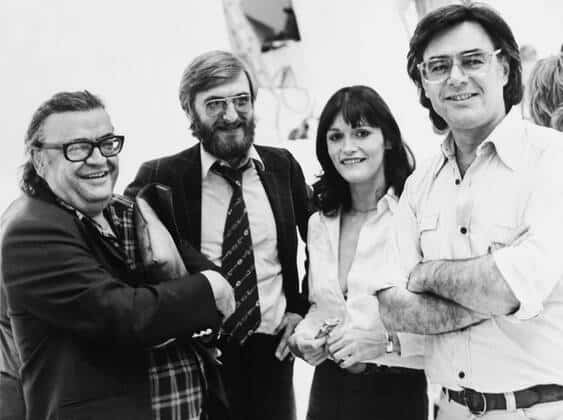
Mario Puzo, Margot Kidder and Richard Donner
22. Donner brought in an old collaborator
There were several thing things Donner didn’t like in that version of the script:
- There was an evil Kryptonian character. He was related to Jor-El and called “Kru-El.”
- Lex Luthor – who was called Luthor Lux, for some reason – had a character tick whereby he would chew on tissue paper.
- And there was a scene where Superman is flying round Metropolis looking for Lex. He sees a bald head in a crowd swoops down and grabs him by the shoulder. The man turns round and it’s Kojak – Telly Savalas. Savalas would have said, “Who loves ya, baby.”
So Donner brought in his friend Tom Mankiewicz. Mankiewicz had written 3 Bond films, and didn’t want to rewrite Superman, but Donner said, “come to mine and we’ll have a chat.” Donner said:
“I got a little stoned, smoked some weed, put on the Superman costume. I was in pretty good shape then. Tom pulled up, and I ran across the lawn pretending to fly and Tom turned round and ran back to his car.”
23. The music is iconic, but could’ve been written by somebody else
The famous score and theme for Superman was written by legendary movie composer, John Williams.
The first person Donner approached wasn’t John Williams, though. Jerry Goldsmith had worked with Donner on The Omen (1976). He agreed to work on Superman but then dropped out when there was a scheduling conflict. So Donner asked Williams, who had just won an Oscar for Star Wars (1977), which was already the third he’d won.
Donner was a huge fan of Williams’ score. He called it, “gloriously perfect” and said the first time he heard it, he was speechless. “I couldn’t talk,” he said. “All I could do was hug him. John just said, ‘I’m glad you like it’”
And then when they recorded the music, Donner ruined the first take by shouting out “Genius!!” when the music started.
John Williams’ main theme for Superman
24. The film included some groundbreaking visual effects work
Coming into this, the effects team didn’t know how to make it look like Superman was flying realistically, because it had never been done well before. They tried lots of different techniques, and spent $2million on failed attempts to make Superman fly…
- Shooting a Superman dummy out of a catapult.
- Hand-drawn animations superimposed on shots of Metropolis.
- A remote controlled aeroplane that they painted to look like Superman.
- And cables and rigs. Some of which is in the film.
None of the above looked realistic, so they had the challenge of inventing something. An effects specialist called Zoran Perisic developed a tool called a Zoptic and Donner said, “he saved the film. Without him, we had no movie”.
A huge screen was placed behind the actors. In front of the actors was a projector that projected the background onto the screen. The screen was highly reflective and bounced the background image back into the camera.
The camera and the projector were synced up, so that as the camera operator zoomed in on the actors, the projector zoomed and changed the background image at the same rate. This created the impression that the actors were moving in the frame.
So any shots where we see Superman fly towards and past the camera, Christopher Reeve was suspended from cables and mimicking flying, but not moving. The camera carried out the movement, and because the background moves as well, it looks like Reeve is flying.
Donner said about the first test: “We watched it back in silence. People at the back couldn’t even see. Then someone shouted ‘it looks fantastic’ and everybody went bananas. Some people were crying, and I wasn’t far behind them.”
How the groundbreaking special effects were achieved
25. The movie was a smash hit at the box office
Commercially, Superman did amazingly well. On a budget of $55 million, it made $300 million at the box office. It was the second-highest grossing film of the year, behind Grease, which took $396m.
As for critics, they were unanimous in lavishing praise on Christopher Reeve. And generally, the film itself received mixed-to-positive reviews.
Roger Ebert gave the film 4 stars out of 4 and said: “Superman is a pure delight. A wondrous combination of all the old-fashioned things we never really get tired of: adventure and romance, heroes and villains, earthshaking special effects and wit. Reeve is perfectly cast.”
Pauline Kael, however, savaged the film and said: “Superman is a cheesy-looking film, with a John Williams score that transcends self-parody.”
Barry Norman gave a mixed review and said: “It ignores the dictum ‘start with an earthquake and build to a climax’ by ending, anti-climactically, with an earthquake. But it’s a lot fun.”
Norman also praised Reeve by saying: “In my list of best newcomers of the year, I’d put Christopher Reeve ahead of John Travolta and only slightly behind Clyde, the orangutan in Every Which Way But Loose.”
And we’re at the end of our list – 25 interesting and fun facts about Superman – one of Hollywood’s original superhero movies. Please share on your social platforms, and subscribe to our YouTube channel for lots of great video content.
The beginning of a beautiful friendship
Stay up-to-date with all things All The Right Movies by signing up for our e-newsletter.


